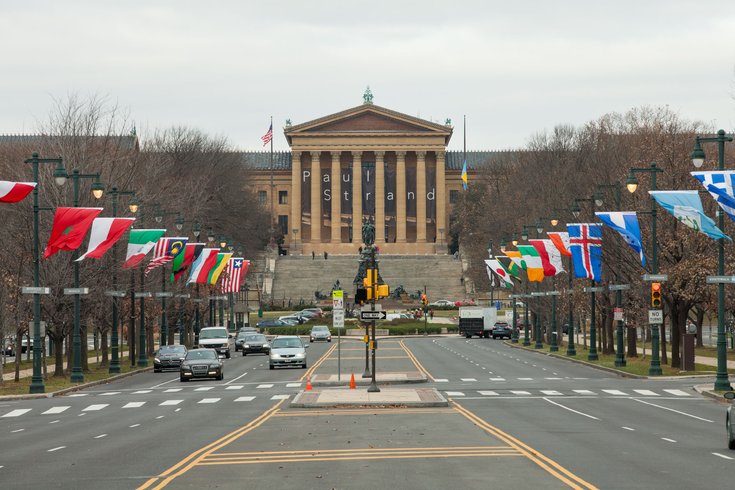
September 27, 2017
 Thom Carroll/for PhillyVoice
Thom Carroll/for PhillyVoice
The Philadelphia Museum of Art and the Benjamin Franklin Parkway.
When Philadelphia officials unveiled the city's updated sustainability plan last November, Mayor Jim Kenney singled out climate change as the most critical challenge Philadelphia faces in meeting long-term goals.
Between the city's first climate readiness report and its defiant response to President Trump's U.S. withdrawal from the Paris accord, Philadelphia has consistently stepped forward to acknowledge that a changing climate will require wide-ranging shifts in infrastructure management.
On Wednesday, Mayor Kenney and city officials gathered at the Philadelphia Museum of Art to unveil an energy plan aimed at reducing the city's contribution to climate change. Why the Art Museum? It's the largest energy consumer of Philadelphia's 600 city-owned buildings and it's in line for a major energy retrofit, part of the museum's own $200 million core project.
“This is an excellent example of the enduring 89-year partnership between the city and the Museum,” said Gail Harrity, president and COO of the Philadelphia Museum of Art. “Under its four-acre roof, the Museum provides care for one of the nation’s largest and most treasured collections of art, and it’s no surprise that the Museum is also one of the city’s most significant users of energy. Today is an exciting moment to show how the Museum and the City are working together to reduce consumption at our iconic, City-owned building."
Details of a citywide strategy are presented in the Municipal Energy Master Plan for the Built Environment, a program of the Office of Sustainability that works in concert with Philadelphia's Greenworks initiatives.
“If we are to ask residents and the business community to do their part in fighting climate change, the City must lead by example,” Mayor Kenney said. “That’s why we are starting with this – a comprehensive blueprint to better manage our own assets to reduce energy use and greenhouse gas emissions in line with our commitments.”
Overall goals of the plan, outlined in four bullet points, extend beyond the emissions framework contained in the Paris accord.
•Reduce greenhouse gas emissions from the City’s built environment 50 percent by 2030
•Reduce the City’s built environment energy use 20 percent by 2030
•Generate or purchase 100 percent of all electricity for the City’s built environment from renewable resources by 2030
•Maintain or reduce the City’s built environment cost of energy at facilities
To get there, the city will operate on several fronts including transitioning to LED lighting, improving building performance through occupancy sensors and controls, working with the Philadelphia Energy Authority to procure renewables and taking other steps toward long-term plans for Philadelphia's Smart City Initiative.
The full plan can be found here.